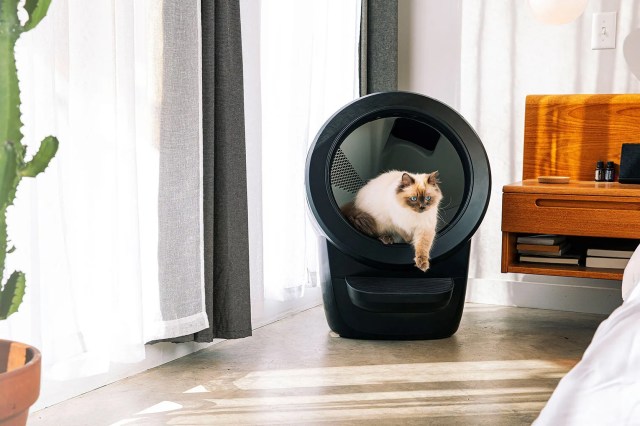All featured products and deals are selected independently and objectively by the author. Better Report may receive a share of sales via affiliate links in content.
I take cat ownership very seriously. That means most of my time and resources are dedicated to making sure my three cats are happy and healthy with full bellies and I wouldn’t have it any other way. I’ll even deal with the litter boxes.
I’ve grown accustomed to the routine, but constantly scooping is not exactly anyone’s favorite part of having a pet. Self-cleaning litter boxes could be worth the hefty investment if this is your most hated chore, but there are health and safety factors to keep in mind. These two are the best options from trustworthy brands. We’ve also included advice and things to consider when deciding to purchase one, plus a helpful health accessory for standard boxes.
Prices are accurate as of September 11, 2024. Subject to change.
How Do Self-Cleaning Litter Boxes Work?
When a self-cleaning litter box detects a cat has been inside — and importantly, has left — it starts a clean cycle. As the drum turns, litter passes through a sifter, separating the clumps and forcing them to fall into the waste drawer underneath. Then it cycles back, emptying the clean litter into the drum. The newest boxes complete a clean in about two minutes.
Why Do Some Experts Not Recommend Them?
Health and safety concerns are the top two things that make some cat experts hesitant to recommend a self-cleaning litter box. Reputable companies have taken these factors into account, but you still have to be proactive.
While you might not enjoy the act of scooping, it gives you insight into your cats’ health. Cats, especially males, are prone to urinary blockages and other infections. If a cat stops urinating, it could become fatal in a matter of days. Self-cleaning boxes eliminate the ability to see how many clumps are accumulating every day, so if you aren’t actively paying attention, you can miss important cues. On the other hand, the boxes recommended here have connected apps that track visits. As long as you’re monitoring it, this might actually put frequent visits on your radar faster than normal. Some apps are better than others at exactly what information they provide, but in general they specify what time a cat visited and how much they weighed — if you have multiple cats of different sizes, you can be sure you know who is going when. Empty the drawer frequently and make sure that clumps look normal too.
Safety is also important. Our favorites here are loaded with safety sensors so cats won’t get harmed in the cleaning process. They detect when a cat is inside, when they’ve left, and even if they’re close to the opening so that everything can stop as a precaution. But you’re still relying on technology that can fail. If you notice anything amiss with the mechanics, turn it off and contact the company to see if it can be repaired. The best safety measures don’t matter if the sensors go.
If the prices here scare you and you’re looking at cheap self-cleaning litter boxes from unknown brands, I’d reconsider. There’s no way to be sure they’re safe, tested, and reliable long-term and there are reports of some boxes harming, often fatally, people’s pets. Just get a great standard box instead.
Will Your Cat Like Them?
Every cat tends to prefer a different type of litter box. Of my three cats, one will use anything and the other two are picky, preferring basic, open-top boxes (there’s a recommendation for one of those below too). Some cats are scared of the movement and won’t get in them at all, which could cause the health problems listed above. If you’re unsure, consider trying a few different types of standard boxes first — like an open-top and a covered one — before spending several hundred dollars on one of these, and always keep a regular box elsewhere as they’re getting used to the new one. We’ve noted below each brand’s return policy.
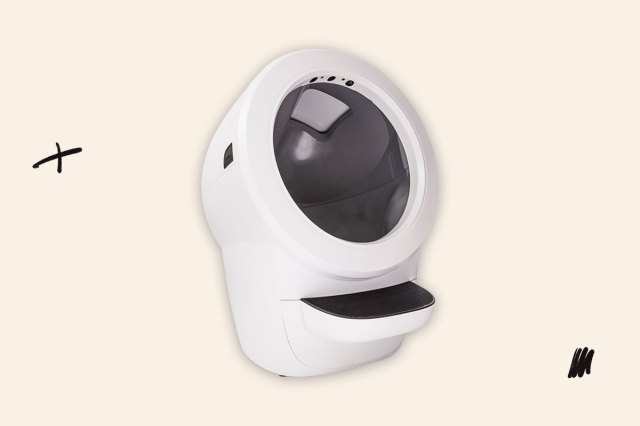
The Best Option: Whisker Litter-Robot 4
Many people call the entire category of self-cleaning boxes “Litter Robots,” but that’s actually the name of the boxes sold by the brand Whisker. The Litter-Robot 4 is modern looking, with a large drum that bigger cats should appreciate, and it’s nearly silent when it cleans. Sensors detect cats that weigh at least 3 pounds, and lasers are continuously scanning safety zones so cleaning cycles will stop the moment a cat jumps into the drum or even stands on the step — it paused a cleaning cycle when I held my hand inside without touching anything. The app is reliable and has added more health and safety features since I last tested it. Whisker’s newest accessory, the Litter Hopper, automatically refills the drum with fresh cat litter.
The Litter-Robot 4 is the priciest of our favorites, but Whisker offers a 90-day trial. You will need to pay for return shipping, however, and it must be in the original box.
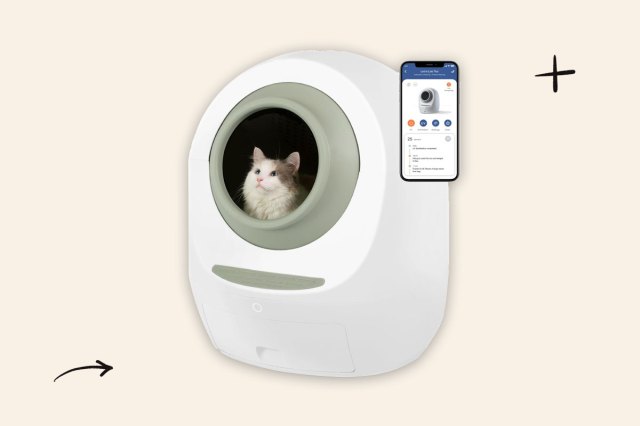
A Close Second: Casa Leo Leo’s Loo Too
The Leo’s Loo Too is very similar to the Litter-Robot 4 in size, design, and function, but you can usually save somewhere between $50 and $100 if you go with this one. I found the design quite cute, but the drum is a little more compact than the Litter-Robot. Some cats may not like the cramped quarters. The sensors on the Leo’s Loo are even more advanced than the Litter-Robot, immediately stopping a cycle if you get even close to it. It also detects cats as small as a single pound. The app was straight-forward and accurate, never missing a bathroom visit.
Casa Leo (named after the founder’s cat) also offers a 90-day return window as long as you have the original package and pay the $75 return fee. If you purchase on Amazon, contact customer service there first for a return.
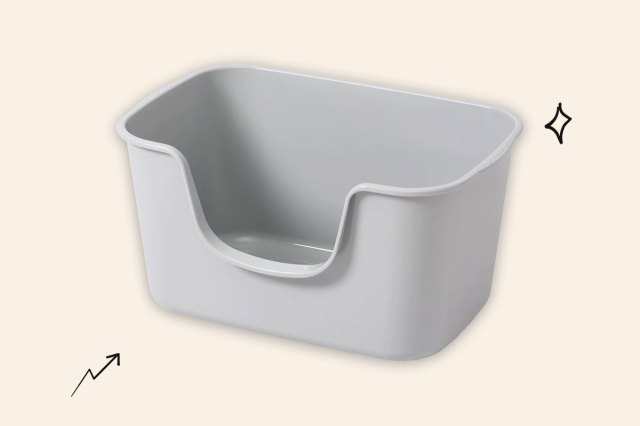
A Good Standard Box: Smart Paws Large Litter Box
Even if you get a fancy self-cleaning box, it’s good practice to have a basic box too. (I know, I know, you wanted to avoid this.) You don’t know if your cat will like a moving box or how long it will take them to get used to it, and there should always be an option available just in case one breaks.
I’ve tried what feels like hundreds of basic options, and I simply love the Smart Paws box. It’s large with high sides and a low step so nearly every cat should be happy using it. There are no small crevices for clumps to stick in, and it’s made from lightweight, soft plastic that is surprisingly resilient against cat claws — and it dampens some of the sound of the scratching. I’ve bought several and can never see myself going back to another type of pan.
Reader Favorites
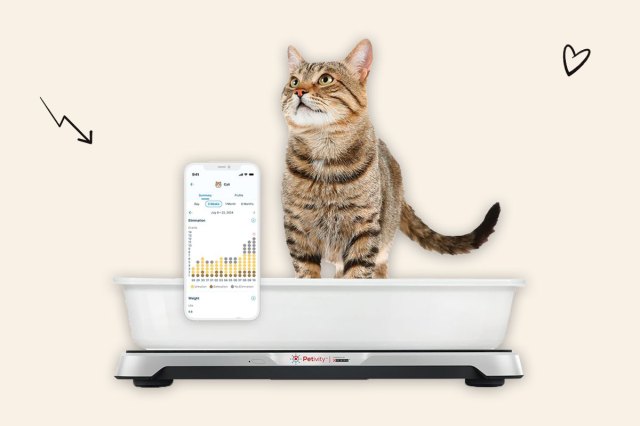
For Health Monitoring Without a Fancy Box: Petivity Smart Litter Box Monitor System
If you like the idea of all the health monitoring that comes with the apps, but don’t want to get a whole new litter box, I highly recommend this Petivity monitor. It sits under any standard litter box and detects with great accuracy which cat went to the bathroom and what they did when they got there. It also monitors weight and typical bathroom habits, alerting you if there’s a sudden change. The Petivity monitor works with up to five cats, though the brand recommends waiting until they’re past kittenhood since their weight and habits are changing dramatically then. When I moved across the country and had to decide what absolutely had to come with us, we got rid of our self-cleaning litter boxes but kept this. I think it’s worth every penny.
Featured Image Courtesy of Litter Robot
More From Our Network
Better Report is part of Optimism, which publishes content that uplifts, informs, and inspires.
